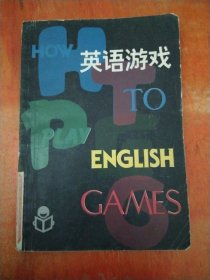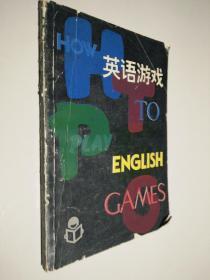
游戏英语教程
全新正版 现货速发
¥ 14.1 4.3折 ¥ 33 全新
库存3件
江苏无锡
认证卖家担保交易快速发货售后保障
作者房晓溪 主编
出版社中国铁道出版社
ISBN9787113159702
出版时间2013-01
装帧平装
开本16开
定价33元
货号1200780020
上书时间2024-10-23
- 在售商品 暂无
- 平均发货时间 9小时
- 好评率 暂无
- 最新上架
商品详情
- 品相描述:全新
- 商品描述
-
商品简介
游戏产业和相关游戏教育行业越来越呈现跨国界的特点,从游戏策划到3D游戏设计和开发,国际交流越来越广泛。《“十二五”高等学校动漫游戏专业设计丛书:游戏英语教程》用5个部分32章的内容全面展示了国内外经典游戏案例并且论述了游戏的策划、美术设计、程序设计及运营全部过程的理论和实践。读者可以领略到原汁原味的国际国内经典游戏的特色及其共有的规律,可以极大地提高读者设计和制作游戏的能力。
《“十二五”高等学校动漫游戏专业设计丛书:游戏英语教程》适合作为高等学校动漫游戏专业学生的教材,也可作为动漫游戏爱好者的参考用书。
目录
PART Ⅰ INTRODUCTION
Chapter 1 What Is Game
1.1 Decision Making
1.2 Goals
1.3 Opposition
1.4 Managing Resources
1.5 Game Tokens
1.6 Information
Chapter 2 GameSpy's 7 Most Influential People in Gaming
2.l EdFries (Microsoft)
2.2 Alexey Pajitnov (Microsoft)
2.3 Gabe Newell (Valve Software)
2.4 John Romero (Monkcystone)
2.5 John Carmack (ID Software)
2.6 Sid Meier (Firaxis Games)
2.7 Shigeru Miyamoto
Chapter 3 The Type of Game
3.1 The Type of Game Design
3.2 Sports Games
3.3 Fighting Games
3.4 Puzzle Games
3.5 Real-time Strategy Games
3.6 Role-playing Games
3.7 First-person and Third-personAction Games
3.8 Simulations
Chapter 4 Fundamentals of Computers
4.1 Cathode Ray Tube Technology
4.2 Image Properties
PART Ⅱ MACHINATE
Chapter 5 The Base
5.1 Starting Points
5.2 Establishing Focus
5.3 Player Character Concepts
5.4 Types of Props and Their Use
5.5 Types of Items/Power-ups and Placement
Chapter 6 Level
6.1 Planning and Building
6.2 Avoiding Common Level Mistakes
6.3 The Process
6.4 Level Separation
Chapter 7 SeripUng
7.1 Scripting in Games
7.2 Scripting Technology Choices
7.3 Using Trigger
Chapter 8 Documents
8.1 The Necessary of Game Development Documents
8.2 The Writing Style
8.3 Story Bible
8.4 The Sections
8.5 Inauspicious Design Documents
PART Ⅲ ART
Chapter 9 Cartoon-looking Rendering of 3D scenes
9.1 Introduction
9.2 Algorithm
PART Ⅵ PROGRAM
Chapter 10 3D Math
10.1 1D Mathematics
10.2 Vector--A Geometric Definition
10.3 Transforming an Object vs. Transforming the Coordinate Space
10.4 What Is Orientation
Chapter 11 What Language Do I use
11.1 C
11.2 C++
11.3 Should I Learn C++, or Should I Start with C
11.4 Assembly
11.5 Pascal
11.6 Visual Basic
11.7 Java
11.8 Tools
11.9 Conclusion
Chapter 12 Basic Concepts in DirectPlay
12.1 Introduction
12.2 Creating and Managing Sessions
12.3 DirectPlay Network Communication
12.4 Communicating with DirectPlay Objects
12.5 DirectPlay Lobby Support
Chapter 13 Client/Server Sessions
13.1 Introduction
13.2 Initiating a Client/Server Session
13.3 Selecting a Service Provider for a Client
13.4 Selecting a Client/Server Host
13.5 Connecting to a Client/Server Session
13.6 Managing a Client/Server Session
13.7 Normal Client/Server Game Play
13.8 Leaving a Client/Server Session
13.9 Terminating a Client/Server Session
Chapter 14 DirectPlay Lobby
14.1 Introduction
14.2 DirectPlay Lobby Architecture
14.3 Lobby Servers
14.4 Lobby Clients
14.5 Lobbyable Applications
14.6 Launching a Lobbyable Application
Chapter 15 DirectPlay Callback Functions and Multithreading Issues
15.1 Introduction
15.2 DirectPlay Do Work Mode
15.3 DirectPlay Thread Pool
15.4 DirectPlay Networking Callbacks
Chapter 16 Engine Solutions and the Unreal Engine
Chapter 17 Direct3D Overview
17.1 Introduction
17.2 The REF Device
17.3 D3DDEVTYPE
Chapter 18 Model Representation
18.1 Introduction
18.2 Vertex Formats
18.3 Triangles
18.4 Indices
Chapter 19 Vertex/Index Buffers
Chapter 20 Bitmap Fonts
Chapter 21 Your First Polygon
Chapter 22 Blending
22.1 The Blending Equation
22.2 Blending in OpenGL
22.3 Note
22.4 Alpha from Texture Map
Chapter 23 Advanced Collision Detection Techniques
Chapter 24 Collision Detection and Particle Interaction
24.1 Introduction
24.2 A Quick Overview
24.3 An Example
24.4 Block Structure
24.5 Notes on Block Maps
Chapter 25 Wu Anti-aliased Lines
25.1 How Does It Work
25.2 What Would the Ultimate Algorithm Be
25.3 A More Sensible Algorithm
25.4 Drawing the End Points
25.5 Special Cases
Chapter 26 Real-time Dynamic Level of Detail Terrain Rendering with ROAM.
26.1 Triangle Fanning
26.2 GeoMorphing
26.3 Frame Coherence
26.4 Supporting Larger Topologies
Chapter 27 Fast Computation of Terrain Shadow Maps
27.1 Introduction
27.2 Algorithm Description
27.3 Algorithm Implementation
27.4 Lightmapping
27.5 Color Component
Chapter 28 Quacltrees
PART Ⅴ MOBILE PHONE MARKET
Chapter 29 Cellphones and Wireless Gaming
29.1 Introduction
29.2 Case Study Comments
Chapter 30 J2ME
30.1 Development Considerations
30.2 The Kinds of Games
30.3 Multiplay Cellphone Gaming
Chapter 31 Career Choices
31.1 Introduction
31.2 Game Programming as a Career Choice
31.3 Game Artist.as a Career Choice
31.4 Game Designer as a Career Choice
31.5 Production as a Career Choice
31.6 Audio Composer and Engineer as a Career Choice
31.7 QA as a Career Choice
Chapter 32 Career Guideline Worksheet
32.1 If You Want to Explore Production
32.2 If You Want to Explore Game Art Construction
32.3 If You Want to Explore Game Programming
32.4 If You Want to Explore Quality Assurance
32.5 If You Want to Explore Game Audio
32.6 If You Want to Explore Business Relations or Marketing
Glossary
主编推荐
相关推荐
— 没有更多了 —




















以下为对购买帮助不大的评价